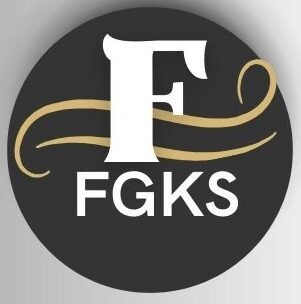The 2001 Kentucky State Quarter ranks among the U.S. Mint’s successful 50 State Quarters program because of its remarkable design qualities together with its important historical value and strong potential worth. The coin presents Federal Hill mansion as well as a thoroughbred horse to depict Kentucky’s historical evolution.
The 2001 Kentucky State Quarter gains its supreme worth from unusual minting mistakes that produce exceptional values reaching up to $500,000.
A detailed examination exists regarding unique features of this quarter and how to verify your potential discovery of something rare.
Features of the 2001 Kentucky State Quarter
The Kentucky State Quarter commemorates the state’s tradition of horse racing and the historical significance of Federal Hill, often associated with the song “My Old Kentucky Home.” The coin was minted in:
- Philadelphia (P Mint Mark)
- Denver (D Mint Mark)
- San Francisco (S Mint Mark) for proof coins
While millions of these coins were produced for circulation, only specific versions with errors or those in pristine condition have significant value.
Types of Valuable Coins in the 2001 Kentucky State Quarter Series

Error Coins
Within the realm of coin collecting error coins stand as fundamental pieces that transform usual and commonplace issues into valuable treasures. The coin errors that exist on 2001 Kentucky Quarters involve three main issues.
- Such production errors result in coin designs that shift off the center of each coin while minting occurs.
- Design elements in Double Dies coins display doubling features throughout their graphical components apart from other regular elements.
- Before striking operations unique problems occur with the blank metal disc which produce Planchet Errors.
- Exceptional errors in coins command high value in the collecting market and have been known to reach $500,000 in specific cases.
High-Grade Coins
Mint state coins graded MS-67 or higher are exceedingly rare and desirable. Features like sharp design details, brilliant luster, and a lack of visible wear are essential for coins to achieve these top grades.
- Coins graded by professional services such as PCGS or NGC confirm their authenticity and quality.
- Values can soar to $5,000 or more for these coins.
Proof Coins
Proof coins at the San Francisco Mint feature both superior details and mirrored surfaces. The coin makers produced these pieces exclusively for collecting purposes without allowing their entry into public circulation.
- While typically not as valuable as error or high-grade circulation coins, proof coins in perfect condition can sell for $20 to $100 or more.
Key Factors That Influence Value
Mint Marks
Mint marks identify where the coin was struck and can influence its value:
| Mint Mark | Mint Location | Value Range |
|---|---|---|
| P | Philadelphia | $10–$100 |
| D | Denver | $10–$100 |
| S | San Francisco | $20–$100 (Proof) |
Error Types
Rarer errors such as off-center strikes or double dies can elevate a coin’s worth dramatically. These coins can command anywhere from $500 to $500,000 depending on the demand and severity of the error.
Coin Grade
Coins in high-grade conditions, such as MS-67 or higher, are far more valuable. Achieving such grades requires:
- No visible wear
- Sharp details
- Excellent luster
Market Demand
Market demand for rare coins fluctuates, but high interest among collectors consistently drives up the value of error and mint state coins.
| Feature | Detail | Potential Value | Key Factor |
|---|---|---|---|
| Mint Mark | P or D | $10–$100 | Standard circulation |
| Error Type | Off-center, double die | $500–$500,000 | Rarity and demand |
| Grade | MS-67 or above | $5,000–$10,000 | Exceptional condition |
| Proof Designation | S | $20–$100 | Special minting |
| Production Year | 2001 | Varies | Historical context |
| Surface Condition | Lustrous, uncirculated | Significant | Visual appeal |
| Market Demand | High for rare finds | Dynamic | Collectors’ interest |
Tips for Collectors
- Examine Your Coins: Look for errors, unusual marks, and mint marks.
- Preserve Condition: Store coins in protective holders to avoid wear and damage.
- Grade Coins Professionally: Certification from PCGS or NGC adds credibility and ensures accurate valuation.
- Research Market Trends: Stay updated on auction results and collector interest for similar coins.
The 2001 Kentucky State Quarter is a testament to the artistry and history behind the U.S. Mint’s 50 State Quarters program. Whether found in circulation or purchased as part of a collection, this coin holds both historical and financial significance. By understanding its features and variations, you can determine whether your Kentucky Quarter is a collector’s dream or just another piece of pocket change.
Conclusion
The 2001 Kentucky State Quarter serves as much more than a coin since it incorporates the creative aspects of coin-making with historical significance and monetary value potential. This quarter marks Kentucky’s historic significance through the representation of Federal Hill mansion along with a thoroughbred horse depiction.
FAQs
Q1. How can I identify an error on a 2001 Kentucky State Quarter?
A1. Look for anomalies like off-center designs, doubling in details, or planchet imperfections. Magnification tools can help spot these errors.
Q2. Are proof coins valuable?
A2. Proof coins are not typically as valuable as error or high-grade circulation coins, but flawless examples can still fetch respectable prices.
Q3. Where can I have my coin graded?
A3. Professional services like PCGS (Professional Coin Grading Service) or NGC (Numismatic Guaranty Corporation) are trusted for grading.







